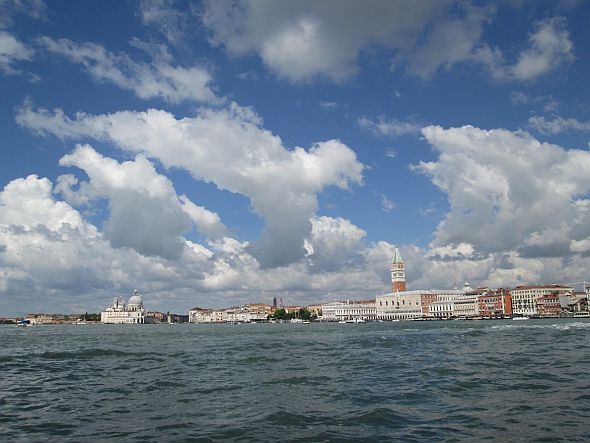
You want to help Venice with her budget problems? Buy a palace. Or 13, if you’re in a good mood — that’s how many the city has recently mentioned considering putting on sale.
But this story isn’t about palaces, it’s about money, need for, lack of.
The thing is this: It’s easy to imagine that All Those Tourists who come through Venice are strewing cash like crazed monarchs. “What’s the problem? Venice lives on tourism!” Actually, it doesn’t. Venice lives mostly on an allowance from the national government which has been cut so far back that there aren’t enough coins left in the municipal pocket to make even one tiny jingle. Venice can’t be self-supporting because there are too few tax-paying residents (more about that in another post) to pay for the needs of a really big, super-old World Heritage Site trampled by millions of people a year.
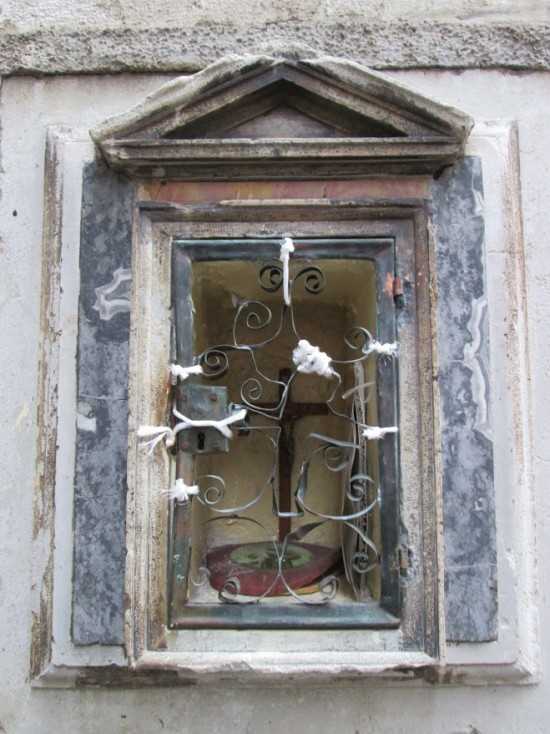

I feel like I’ve been reading about Venice’s financial problems all my life, but the stories come out in bits and pieces and aren’t very well connected, and the numbers are always up in millions and billions, so I’ve never had a clear notion of what was involved in paying for keeping Venice running. Now I have some information even I can understand, so here goes. To save space converting numbers, just bear in mind that one euro = 1.12 dollars at the moment.
One reason it’s hard to understand how Venice can be so broke are the thrilling reports of money made from big events such as New Year’s Eve, the Biennale, and Carnival. The numbers are dazzling to a one-celled organism like me. A few months ago a story in the Gazzettino trumpeted the fact (I guess it’s a fact) that 40 million euros were expected to come pouring through the big chute labeled “Carnival.” Forty million euros!! My first reaction is “Semo in poenta!” which is Venetian for “We’re in polenta!” which is Venetian for “We’ve struck paydirt!” (Or “We can make next month’s rent!” or “We can buy the kid a new pair of shoes!” or “We can feed your mom this week!”).
But pausing for a moment to consider how this money is distributed — hint: it doesn’t drop directly into the city’s coffers — the reality is that (A) that much money is expected to be spent here (yes!!) by tourists paying for things like (B) hotel rooms (C) food (D) gondola rides (E) taxi rides (F) fabulous ticket-only costume parties and masked balls in palaces, tickets to which can reach 2,500 euros, and (E) extras. “Extras” is usually where my own budget strikes the reef.
The benefit to the city from all this spendage is supposed to arrive via taxes. You know, the taxes nobody pays. Sorry — almost nobody. More about taxes in another post.
So forget big events and their resplendent ephemeral income. Let’s look for a moment at the city’s everyday budget.
Income: The Special Law for Venice. Before I continue, it’s worth knowing that billions of euros granted to Venice over the past decade or so for the benefit of the city and lagoon have been pretty much all diverted to the MOSE project. This diversion was accomplished by the MOSE people, with a big assist from the city fathers and anybody else who could get close enough to stick out their hand. I draw your attention to the phrase in the Law which mentions that the money is also granted to Venice “to ensure its socio-economic viability.”

The Gazzettino reported the most recent allotment of funds via the Special Law: Venice will get only half of the money that was hoped for. (“We have no money” is not exclusively a Venetian song.) The city will receive a total of 65 million euros over seven years to be doled out thusly: 5 million in 2016 and 10 million per year from 2017 to 2022. Looked at that way, it doesn’t sound like much at all, and of course the city fathers agreed; some politicians had pressed for 50 million per year for three years, while another political group had suggested 13 million per year for an unspecified number of years. (They were probably estimating “forever.”)
To put those numbers into some kind of context, until a few years ago (by which the Gazzettino probably means 2008), the city spent 150 million euros a year. Now it’s a struggle to the death to find the money for paying the policemen.
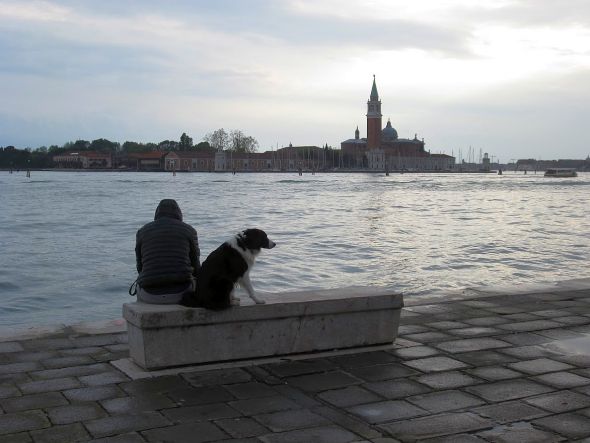
Good news: The city has pulled itself up nearer to the edge of the deep hole into which it had fallen, thanks to the drastic cuts made in the budget by Commissario Vittorio Zappalorto (2014-2015). When I say “drastic,” I mean along the lines of “We had to destroy the budget in order to save it.” So at the end of 2015, after slashing and burning by him as well as the new mayor, Luigi Brugnaro, the deficit has been halved. The 64 million debt is now 30 million euros. This is huge news, though of course 30 million isn’t a particularly small number.
The Special Law allotment includes money for art works. The Ministry of Culture is allowing 6 million euros to Venice (out of 13 million to the Veneto) for 241 projects defined as being at the national level, among which is legal tender for the following projects:
- Finish the restoration of the great stained-glass window by Vivarini at SS. Giovanni e Paolo: 600,000 euro.
- Complete the restoration of the church of the Gesuiti: 1,000,000 euros.
- Restore the squero of the Bucintoro at the Arsenal: 400,000 euros.
- For the recovery of the patrimony of furniture, fabrics, paintings, and other objects including the fittings of a gondola which are in the storerooms of the Superintendent of Beni Culturali, for the collection of the Palazzo Reale (royal palace): 300,000 euros. (If you’re wondering where is the royal palace, it is a series of rooms in the “Ala Napoleonica,” built by Napoleon and now housing the Correr Museum; these rooms were occupied by him, of course, and then by the Hapsburg monarchs whenever they were in town during the Austrian occupation).
- Updating the fire-extinguishing system in the Marciana library: 800,000 euros.
- Surveying and conserving the 16th-century wooden ceiling of the vestibule of the Marciana library: 620,000 euros.
- Restoration of State Archives, maintenance work, and bringing the lightning rods up to code: 841,000 euros.
- Accademia Galleries: 1,500,000 euros for uses not specified by the Gazzettino.
- Surveys, studies and security interventions on the island of Lazzaretto Vecchio: 390,000 euros.
- Second phase of the realization and installations of the National Museum of Marine Archaeology in Caorle: 1,900,000 euros. (Good going, Caorle city fathers!)
This is all very gratifying, and I’m not being sarcastic.
But now we come to the prickly subject of Outgo. Moving our eyes from art treasures to the World Outside, things look less lovely.
The Special Law has provided 28 million euros, which is earmarked thusly: 5 million for maintenance of parks and green spaces; and 10 million for “cultural interventions” (theatre, cinema, programs at the Bevilacqua La Masa foundation and the Querini Stampalia. I thought those were private?); and 13 million for ‘touristic interventions,” which despite the label are subdivided to pay the municipal police (7,500,000) on holidays and nights; 1,100,000 for the Venetian-rowing world; 1,600,000 for the “organization of events,” especially the promotion thereof. This is the division of the spoils till 2018. We’ll definitely be turning our shirt collars and drinking tap water to get through three years on that allowance.
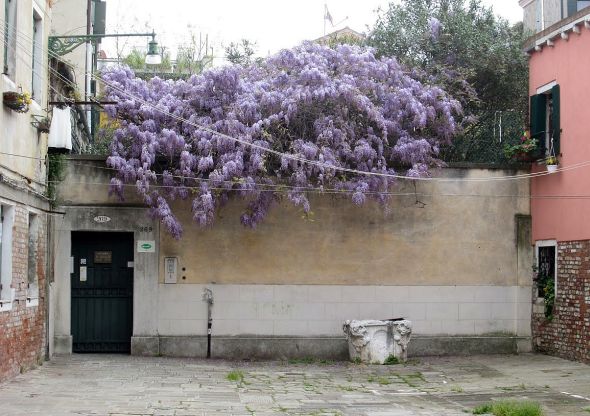
A very interesting and detailed article in a magazine called “Il Metropolitano” outlined what it costs to keep Venice running (translated by me). The subtitle gives a hint of things to come: “To guarantee the services in the Historic Center costs 41 million more per year than any city in the rest of Italy. And Rome is sending less and less money.” It’s true that Venice is the most expensive city in Italy, but now I see that it’s expensive not only for tourists and residents, but for itself.
An independent research organization, the Centro Studi Sintesi, recently did a detailed rundown of the city budget. You don’t need to be some financial wizard to grasp that the 5 million euros allotted for 2016 falls slightly short of the estimated 120 million annually that Venice needs. There’s more — due to drastic national cuts imposed in order to get the Italian economy in line with European norms, Venice did not receive the 1,250,000,000 (you read that right) it was expecting over the past few years, and only got 77 per cent of what was expected between 2010 and 2015, which makes Venice the city most-penalized by national economic restrictions in the country.
Let’s go to the videotape:
Garbage collection and street cleaning: 30,000,000 per year. It’s commonly thought – I used to think it too — that the amazing quantity of tourist trash increases the spazzino‘s workload, but statistically this turns out not to be true. The study says that the cost is high because Venice is the only city in the world in which, six days a week, the trash is collected entirely by hand. The small streets and winding canals are implacable on that score. The average annual cost of garbage collection in Mestre, on the mainland, is 156 per family or entity such as a shop or restaurant. In Venice, it’s 727 euros per family or entity.
Cemetery: 2,000,000 per year. Stories keep appearing in the paper about how the cemetery on the island of San Michele is falling to pieces. And it is. But there are also 16 other cemeteries in the Comune of Venice and, the study specifies, eight in the Historic Center. There’s San Michele, but there are also two cemeteries on the Lido one each on Burano (actually Mazzorbo), Malamocco, Pellestrina, San Pietro in Volta, and Sant’ Erasmo. There are eight more in the Comune of Venice on the mainland.
Sewage treatment: 600,000 euros. No, it doesn’t all go into the canals anymore. For the past 20 years there has been a steady improvement in this necessary part of city management. Septic tanks have been required to be installed in public buildings — hotels, restaurants, offices, museums, etc. But again, the tiny, complicated spaces of which Venice is so fascinatingly constructed means that there isn’t one in the Historic Center. You may have noticed that “honey boats” come and pump out the septic tanks, but the city doesn’t pay for that. The sewage is taken to one of the 30-some treatment centers strewn around the Comune, which includes some of the mainland. There is one center on the Lido and one in Pellestrina, to which the houses there are connected.
Public parks (“green spaces”): 600,000 euros. Although not considered technically an essential public service, there is a surprising number of big trees around, in biggish and smallish parks alike. And also shrubs and flowers, which are so desperately wonderful in the summer heat. But trees and bushes need to be trimmed, pruned, and lopped. Unhappily, this category of expense does not include trimming the bridges, which continue to sprout destructive plants and weeds because, in the organizational scheme, shrubbery on bridges is nobody’s responsibility. It’s not garbage, it’s not a green space, it’s not anything but just stuff.

Tide Forecast: 1,200,000 euros. Acqua alta is far from free. First, there is the cost of putting out and removing the high-water walkways. That is to say, hauling them all from the warehouse in September and stacking them at the crucial points; unstacking and positioning them when high tide is coming ashore, stacking them up again (to save space on the street) when the tide goes out, and on and on until April, when they are definitively hauled away to the warehouse. But this is paid for by the garbage-collection budget, because it’s the spazzini who do this work. Thereby leaving uncollected bags of garbage all over the city on high-water days.
But the real cost is the maintenance of the system of collecting data and forecasting the tide, which requires many instruments (maintenance of) and manpower to analyze and broadcast the data. Somebody has to hit the button to sound the warning sirens, after all. I can tell you that this department needs lots more money than it gets. And then, of course, the citizens screech when the prediction is not fulfilled. You can understand people yelling when the tide turns out to be higher than forecast, but people yell when it turns out to be lower, too. If I had to work at the Tide Center, I’d be on drugs.
Street Lighting: 1,000,000 euros. When I came here in 1994, there was still a good number of streets which were dark and romantic. Or dark and ominous, as you prefer. On our fondamenta (in another neighborhood), the only light at sundown was from the window of the deli across the canal. I used to call it “the lighthouse of the neighborhood” – it was the only gleam in the gloom of a dismal, foggy night. Then the city started to install more streetlamps and now there are some areas that are as bright as stadiums. Here again, Venice’s fascinating interweaving of tiny streets creates unromantic problems. On the mainland, 292 lamps per square kilometer are sufficient. In Venice, you need 804. And all that juice isn’t cheap.
School lunches: 300,000 euros. No need to repeat it – Getting cargo around Venice is costly (lots of canals, bridges, streets, and most important of all, very little storage space, therefore more trips). A child eating in the cafeteria in a school in Venice pays from 76 – 84 cents more per meal than a child on the mainland.
Handicapped transport: 1,200,000 euros. The explanation of this expense isn’t clear. I can understand that making many places wheelchair-accessible is expensive, but once that’s been accomplished, the cost should diminish. There are buses on the Lido and mainland which have extending ramps to help people in wheelchairs board, but to get on a vaporetto, the person still needs to be hoisted by hand. Still, this is in the budget, so there we’ll leave it.
Ordinary maintenance: 4,100,000 euros. To the naked eye, it appears that this generally consists of putting warning tape around spots that are dangerous (broken pavement, collapsing fondamente, and so on). Canal-dredging has become a mere dream. But let’s say that some problem crops up with the wiring in City Hall – fixing it will cost 20 per cent more than on the mainland. Costs for construction are 30 per cent higher than on the mainland. The biggest challenge (expense) has to do with the street pavement. On the mainland, just throw down another layer of asphalt. Here, the streets have to be torn up and reconstructed stone by stone. Result: It costs 80 per cent more in Venice than on the mainland to fix a street.
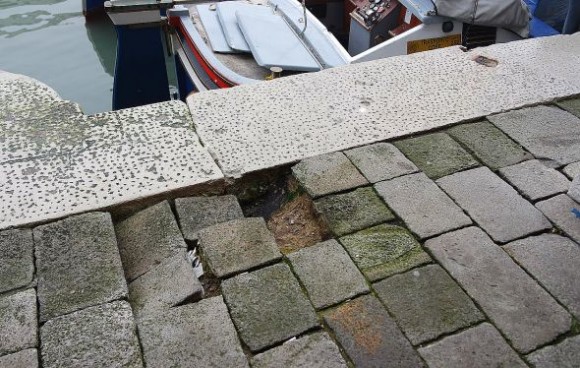
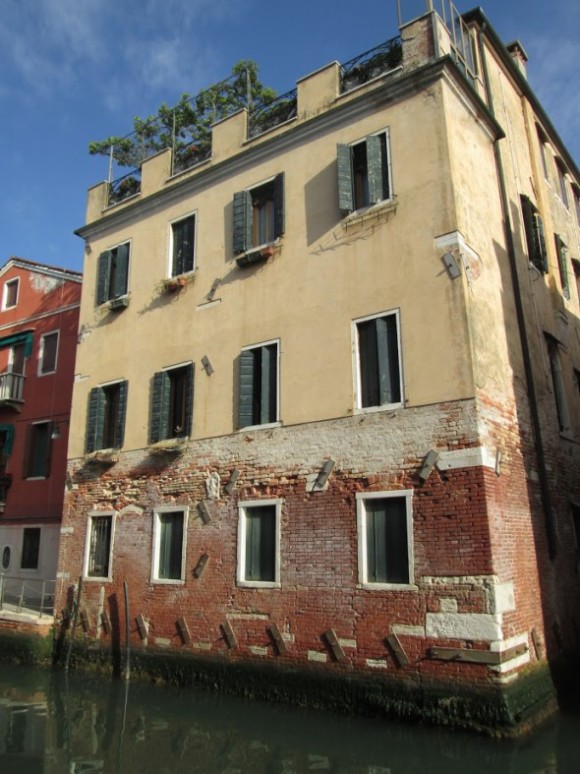
I will tell you a revealing remark made to me many years ago by a Venetian who was showing me some of the destruction wrought by motondoso on fondamente and assorted streets and bridges. He pointed out a few massive stones bordering the fondamenta at the church of the Salute. Their relationship with the horizontal had been compromised by some trivial wound, and waves and gravity were obviously going to make it worse. I, with my quaint, Anglo-Saxon “stitch in time,” “for want of a nail” outlook on life, asked him why the city didn’t intervene to repair this now, thereby avoiding more work later. He said, “Because it doesn’t cost enough.” Translation: Only when a problem becomes big, and therefore costly, and therefore worthwhile to some company to make loads of money fixing it, is the situation addressed. This makes the same amount of sense as not clipping a hangnail because when it becomes gangrenous you can bring in teams of expensive surgeons and teratons of drugs and everybody makes some money.
There is even a saying to cover this approach: “Don’t bandage your hand until it’s hurt.” To which I always reply, “If you avoid hurting your hand, you won’t have to bandage it.” You can say it in Italian, but I haven’t found anybody who thinks it makes sense.
Let’s finish in a blaze of glory, or at least a blaze from some shorted-out circuit on the tram line. My idea is this: If you can’t pay to fix the problems you already have, at least don’t create new problems that will cost even more money. The tram holds a weird fascination for me, as it continues to reveal spectacular flaws in design and construction. There are almost daily breakdowns, delays, malfunctions of all sizes and shapes down to the fact that there isn’t an adequate system for de-fogging the windshields. It cost 208 million euros to build two lines and buy the trains, but it costs twice as much as a normal bus to operate. The electric bill is 2,500 euros ($2,820) a day. Two carriages of the 20-train fleet are permanently out of service, left in the shop to be cannibalized for parts as needed, because the company which made the parts has gone out of business.
I think that’s enough for one day.

9 Comments
Brava! Love your blog, always interesting, informative, and with a great dose of humor. You say so many things I am usually thinking! 🙂 Thanks for taking the time to share these posts with us.
Thanks! I’m always hoping somebody besides me finds all this interesting.
Rest assured – you’re fabulous!
I may not comment often but I do find what you write of extreme interest and read every word.
Please continue keeping us informed!
Blimey, its enough to make one weep! A brilliant fact-packed blog post but so depressing that so much money is needed but lacking. Thanks for sharing!
Indeed, interesting and indeed, depressing. To think that soooooo many Venetians, whether public servants or business people, Northern League ‘patriots’ or ‘successful’ entrepreneurs have lined their pockets (for centuries, we have to admit) at the severe detriment of Venice. The city to which they owe their status and power (and riches). Dear old Venice, not so much the ‘whore’ but more like a trafficked sex worker. I write this my mind immediately shifts to other geographies where the same thing happens, did happen, will happen. It’s no wonder why the 5-Stars, Trumps and other populists are winning. It’s just so sad, as you rightly point out – it does NOT have to be this way. (Norway has laws that force it to actually save money every year, so they don’t squander the oil money…just sayin’). A friend who has worked as a finance director in an Italian theatre has stories of money-wasting that would raise the hairs on your head. She has led many initiatives in the arts sector where she really had to penny-pinch, scrimp and save and made fantastic projects nonetheless. Hence her shock and disgust at her own colleagues. It doesn’t have to be that way! (But how to make sure it isn’t?)
Another brilliant post. I enjoy so much how you manage to drag us into the real Venice. To see the city as it really is.
Thanks for this, I think part of the issue is that, because the shops,restaurants & hotels are so expensive more and more tourists are arriving in droves and are here died round like sheep, spending money only in pre-selected spots. Other tourists stay on the mainland, mainly Mestre, but even out by the Airport.
We’ve spent 9 out of the last 10 Christmases in Venice, but this year may well be our last as all the rental apartments now treat Christmas as peak season and want over £1000 for a week 🙁
Sorry, forgot to say, the rental apartments, which are now almost all owned by non-residents, are also the issue, if you can’t give a local a home, you can’t tax him or expect him to contribute to society in any other way, but they will consume services regardless (street cleaning, lighting etc).